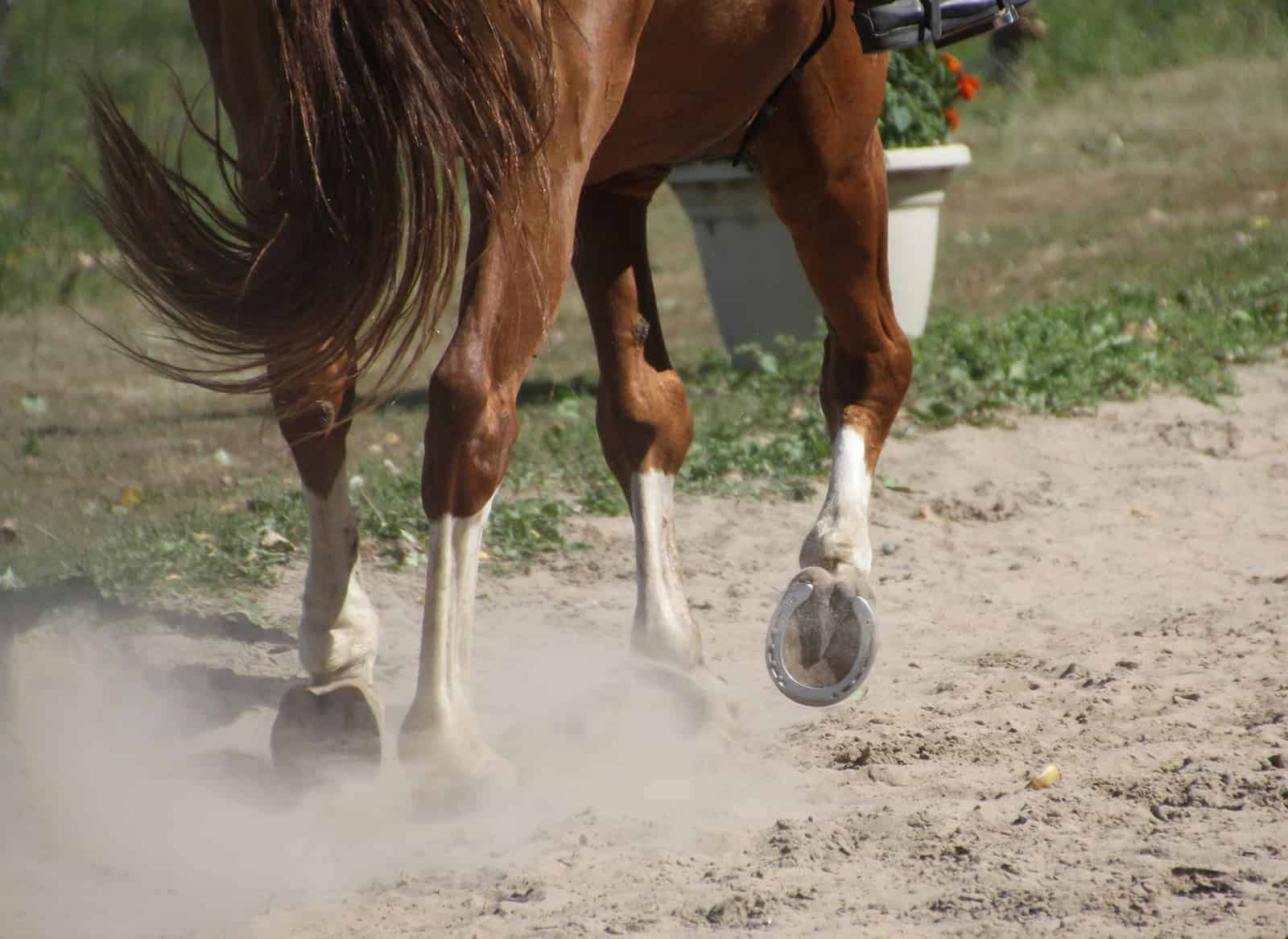Farriers Discuss What Shoe Wear Reveals

On the third of four intense days of continuing education at the 14th International Hoof-Care Summit in Cincinnati, Ohio, farriers and veterinarians came together Jan. 26, 2017, in roundtable discussions to compare their experiences and offer advice to their peers. In one packed session, farriers discussed shoe wear, what it indicates about the horse, and what can slow it down. In addition, attendees reviewed how riding discipline and certain health conditions might impact shoe wear.
Adam Wynbrandt, APF, vice president of the American Association of Professional Farriers/International Association of Professional Farriers, who moderated the session, said he’s personally seen shoe wear patterns herald upcoming health problems. He told the audience that as they gain more knowledge, they can tell more about the horse based on shoe wear.
Factors affecting shoe wear run the gamut and can include:
- Arena footing or turnout surface;
- Shoe material;
- Conformation and way of going;
- Ongoing medical problems;
- Shoe tightness; and
- Saddle fit, among others.
Subtle Shifts?
It’s important for the farrier to ask the horse owner what he or she is doing with the horse and if anything has changed. For example, have there been changes in the horse’s or rider’s weight or rider’s skill level? Are other riders now riding the horse? All these factors could cause horseshoes to start wearing differently than normal.
One attendee noted that if, historically, a horse has shown a wear pattern on one side of his shoes but then this stops, it could indicate that the owner might have changed something with the horse.
Another farrier said a horse he was shoeing had medial (toward the midline of the body) toe wear. It turns out the horse had hock problems, and once the veterinarian injected those joints, the medial toe wear pattern went away.
What Lies Beneath
Farriers also discussed how footing affects shoe wear. For example, if a horse is ridden in an arena with newly added heavy sand, then steel shoes might start to show increased wear. On the other hand, many agreed that chopped rubber footing is one of the easiest surfaces on shoes.
Another change that can cause a shift in shoe wear patterns is addition of stone dust or a similar material to a field or paddock to help deal with mud issues. The abrasive surface wears a shoe down faster than normal terrain would.
One farrier who favors using synthetic-material shoes said they wear similar to a steel shoe and provide the same type of information. He added that higher-density synthetic shoes wear quicker.
Horse Factors
Regarding horses that show shoe wear changes, the farriers described how laminitic horses that recover or have had a recent setback might have unusual wear.
They discussed the differences among disciplines, such as how endurance horses wear shoes down very quickly and could need a reset after just one race. One solution for excessive wear is to use borium.
One farrier made a general suggestion to add weight to the shoe to reduce wear, because the horse will pick up its feet higher.
Often horses that are not engaging their hindquarters or conditioned for the type of work they are doing wear shoes faster. On the other hand, dressage horses, which must engage their hindquarters during work, tend to wear down their hind shoes faster and might need those shoes reset more often than horses in other disciplines.
One Standardbred racehorse farrier noted that he would trim a horse’s foot down on the side of increased wear because the horse was clearly off balance, but then occasionally he would trim the opposite side more to move the hoof’s center of force to the medial branch.
Regarding Standardbreds, farriers noted that pacers tend to wear down the inside of the hind feet while trotters wear down the outside.
If any horse is wearing hard on the toe, one farrier said rocker-toed shoes might be a good option to apply. Another agreed, adding that he sees this with trail horses and puts them in concave shoes. Concaved shoes give horses more purchase, which helps prevent excessive wear.
Take-Home Message
Regardless of the breed or discipline the farrier attendees serve, they agreed that it’s important to record shoe wear in their notes because it’s difficult to remember. Monitoring shoe wear and changes over time is a key way farriers learn about their clients’ horses.
Written by:
Sarah Evers Conrad
Related Articles
Stay on top of the most recent Horse Health news with















